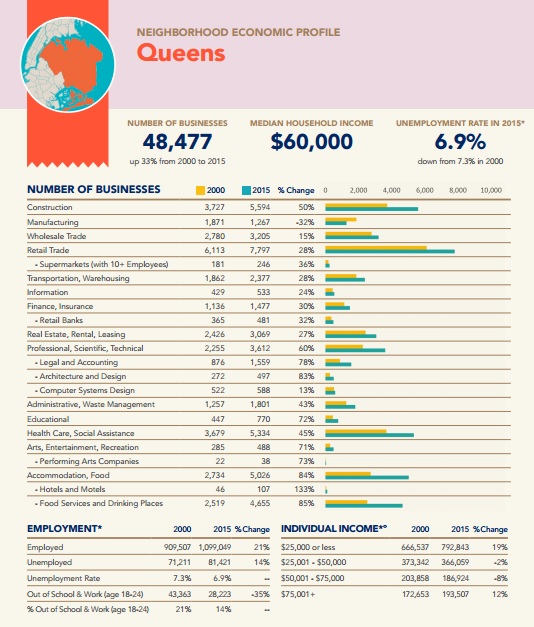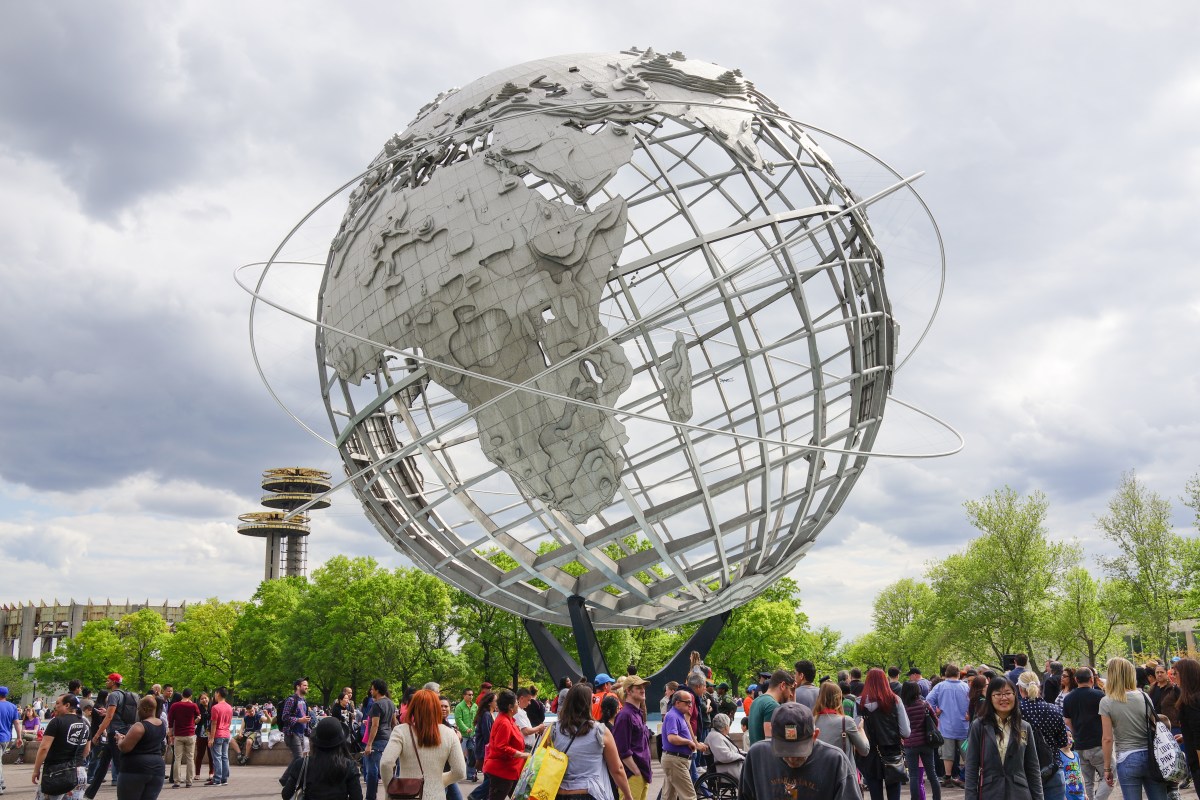A report released by the City Comptroller Scott Stringer shows that while unemployment fell in the World’s Borough, the number of people making the most income – and the number of those making the least income – grew significantly.
The report, released on April 24 and titled “Neighborhood Economic Profiles,” offers an economic snapshot that includes every community board in Queens from 2000 through 2015. Stringer called it “by far the most comprehensive and up-to-date look at Queens’ evolving economic landscape available today.”
It includes the number and types of businesses in each neighborhood, the median household income, population demographics and more. The report shows that the number of businesses in Queens, 48,477, increased by 13 percent in 2015 from 2000.
The 2015 median household income in Queens was $60,000, which is higher than the median income in New York City, which was $55,200 in 2015. The unemployment rate in Queens decreased to 6.9 percent in 2015 and that rate was 7.4 percent in New York City.

But in many Queens neighborhoods, the number of people making $25,000 or less or $75,001 or more jumped. People making $25,001 to $50,000 or $50,001 to $75,000 decreased.
In Ridgewood, Glendale and Middle Village, individuals making $25,000 or less jumped 17 percent from 2000 to 2015. Individuals making $75,001 or more increased by 28 percent. But people in the middle income brackets increased by only 8 and 10 percent, respectively.
In Forest Hills and Rego Park, individuals in the middle income brackets decreased by 2 percent and 23 percent, respectively. People making $25,000 or less increased 15 percent and those in the highest income bracket jumped by 27 percent.
Flushing, Murray Hill and Whitestone saw a decrease in every income bracket except for those making $25,000 or less, which jumped 24 percent.
In Richmond Hill and Woodhaven, the percentage of people in the lowest and highest income bracket jumped dramatically. In 2015, people making $25,000 or less jumped 37 percent and individuals making more then $75,000 jumped 24 percent.
In Howard Beach and Ozone Park, the percentage of individuals in the middle income brackets stayed completely stagnant.
Queens Village, Cambria Heights and Rosedale saw no increase in people making more than $75,000, a decrease in the percentage of people making $50,000 to $75,000 and a 39 percent increase in people making $25,000 or less.
In Astoria and Long Island City, where rents have been exploding, the percentage of people making $50,000 and more jumped 14 percent in 2015 and those making more than $75,000 jumped 48 percent.
Sunnyside and Woodside saw the largest jump in those making more than $75,000 in 2015. According to the report, individuals in that income bracket jumped 72 percent.
From 2000 through 2015, the borough saw a 6 percent increase in population, with senior citizens representing the biggest increase. The percentage of seniors jumped 11 percent while newborns through 18-year-olds decreased by 6 percent.
Though the borough saw a 22 percent increase in people working in Manhattan, Queens experienced a 31 percent increase of residents working in their home borough. More people in the borough had a bachelor’s degree or higher in 2015 compared to 2000 (43 percent) and the percentage of people with an associate’s degree also jumped 41 percent.
A larger number of people now take public transportation to work (a 34 percent increase) but the number of people working from home has exploded. In 2015, the number of people working from their houses jumped 61 percent.
In terms of demographics, Asians saw the largest percent increase in the borough with a 51 percent increase from 2000 through 2015. The percentage of Hispanics in the borough increased by 20 percent while the percentage of African-Americans decreased by 4 percent. Caucasians saw the largest percent decrease – the population of Caucasians in Queens decreased by 19 percent.
Though the comptroller said he saw some positive growth in the report, he acknowledged the city must do more.
“But it’s also true that the benefits of that business growth have not always been broadly distributed, and that deep disparities persist along racial, educational and geographic lines,” he said in the report. “In short, I believe we need to create more local wealth in all our boroughs, and we can only do that with more innovative, collaborative, and community-centric solutions.”
To view the full report, click here.



































